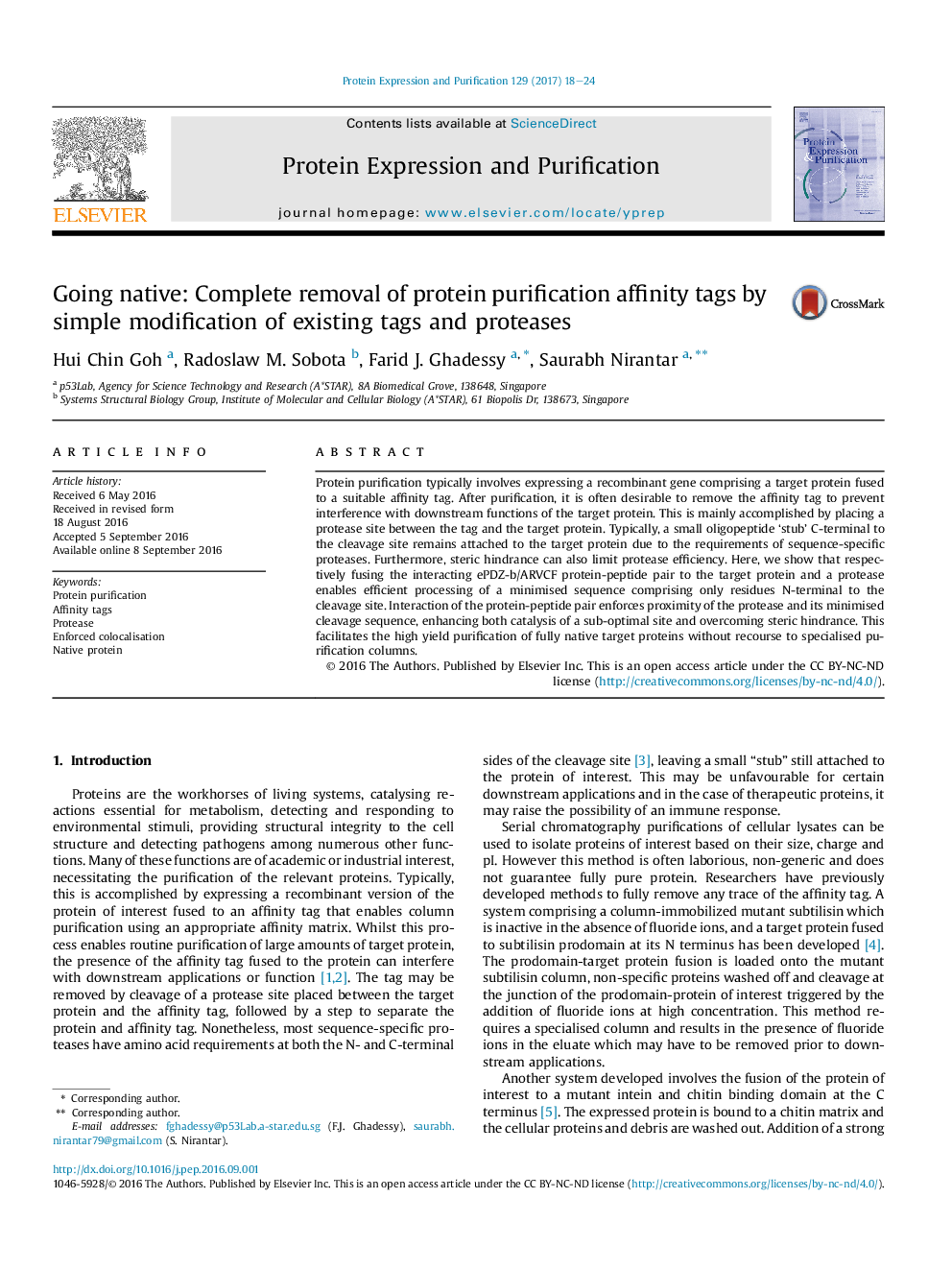| Article ID | Journal | Published Year | Pages | File Type |
|---|---|---|---|---|
| 5516161 | Protein Expression and Purification | 2017 | 7 Pages |
â¢A method developed to improve protease cleavage of recalcitrant fusion proteins to yield completely tag-free proteins.â¢SplB and TEV proteases adapted for improved cleavage.â¢On-column cleavage of histidine tagged fusion protein demonstrated.â¢Native status verified by mass spectrophotometry analysis.
Protein purification typically involves expressing a recombinant gene comprising a target protein fused to a suitable affinity tag. After purification, it is often desirable to remove the affinity tag to prevent interference with downstream functions of the target protein. This is mainly accomplished by placing a protease site between the tag and the target protein. Typically, a small oligopeptide 'stub' C-terminal to the cleavage site remains attached to the target protein due to the requirements of sequence-specific proteases. Furthermore, steric hindrance can also limit protease efficiency. Here, we show that respectively fusing the interacting ePDZ-b/ARVCF protein-peptide pair to the target protein and a protease enables efficient processing of a minimised sequence comprising only residues N-terminal to the cleavage site. Interaction of the protein-peptide pair enforces proximity of the protease and its minimised cleavage sequence, enhancing both catalysis of a sub-optimal site and overcoming steric hindrance. This facilitates the high yield purification of fully native target proteins without recourse to specialised purification columns.
